Report by Aram Petrosyan | Project Coordinator | Heifer Armenia
Translated by Emma Sargsyan | PR and Communication Officer | Heifer Armenia
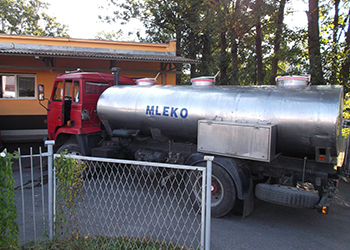 The presidents of milk-producing cooperatives from several Armenian communities went on a study tour to Poland on September 7-12, 2012. Rudik Barkhudaryan, Karen Zalinyan and Petros Petrosyan, milk producers from Agarak, Gargar and Khachaghbyur in the Lori and Gegharquiniq regions, were accompanied by Heifer Armenia partner Ashtarak Kat, CJSC Food Processing Unit head Gevorg Burnazyan and Heifer Armenia Project Coordinator Aram Petrosyan. Heifer Poland team members Marek Klauzinski, Hubert Kropielinski and translator Azat Poghosyan guided the delegation.
The presidents of milk-producing cooperatives from several Armenian communities went on a study tour to Poland on September 7-12, 2012. Rudik Barkhudaryan, Karen Zalinyan and Petros Petrosyan, milk producers from Agarak, Gargar and Khachaghbyur in the Lori and Gegharquiniq regions, were accompanied by Heifer Armenia partner Ashtarak Kat, CJSC Food Processing Unit head Gevorg Burnazyan and Heifer Armenia Project Coordinator Aram Petrosyan. Heifer Poland team members Marek Klauzinski, Hubert Kropielinski and translator Azat Poghosyan guided the delegation.
Following is my day-by-day account of our trip:
September 7: Day One
From the airport we set off to the Garvolin regional milk cooperative, about 37 miles from Warsaw. Here we were greeted by the president of the Union of National Milk Producers, Valdimir Bros; head of the Garvolin Cooperative, Valdamir Pazevski; and the head of the milk reception unit of the same cooperative Henrik Guzhj. This cooperative, with a 110-year history, has 1,400 members and receives 83 million liters of milk yearly from the average farmer. Still, the cooperative is only able to satisfy 1.5 percent of the Polish Milk market demand.
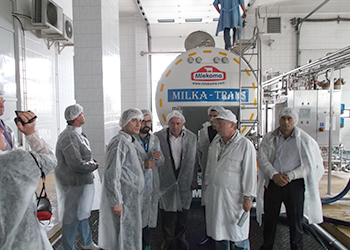
September 8: Day Two
We set off to visit the farm next to the Warsaw Agricultural University, which has 40 years of rich history behind it. There were 700 Holstein cows, 360 of which were milking. Each cow on average gives 2,600 gallons of milk annually, and that would mean that the farm can supply more than 936,000 gallons of milk annually. This huge farm was operated by just 13 people. We had a meeting with the farm manager and veterinarian, who showed us the farm and explained all the procedures of feeding, milking and milk-cooling. Our team was really impressed by the success of the farm and the staff, who willingly shared with us all the procedures and secrets to their success.
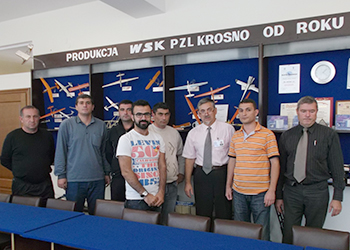 In the afternoon, time came for some leisure activities. We had a wonderful opportunity to go sightseeing and enjoy the beauty of Warsaw.
In the afternoon, time came for some leisure activities. We had a wonderful opportunity to go sightseeing and enjoy the beauty of Warsaw.
September 9: Day Three
We set off to Sanok. The trip was a bit long, but gave us an opportunity to enjoy the beauty of Poland. When we reached Sanok it was already evening, so all we could do was settle down at the hotel and enjoy a nice dinner with our counterparts from Poland.
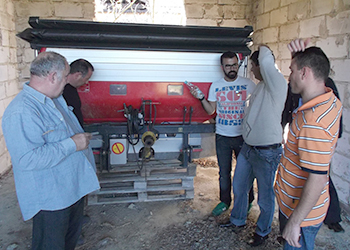 September 10: Day Four
September 10: Day Four
Under the guidance of Renata Gots, a representative of Polish Federation of Cattle Breeding and Milk Production, we visited the regional milk cooperative OSM SANOK. We were met and greeted by the head of the cooperative, Mr. Antoni Zaklik; Vice President Tadeos Oszhanin; and Zofya Bonk. They introduced us to the history of the cooperative followed by a tour and a question-answer session.
Afterwards, the PLZ Krosno enterprise was waiting for us about 26 miles away. This company has been producing high-quality equipment for more than 45 years, such as milk-cooling units, storage and cooling equipment for trucks. We were met by CEO Vocekh Nedzelski and Commercial Manager Yanush Dushkevich, who introduced the work and products of the company. We were impressed by the organization and the company’s high-quality products.
The tough schedule dictated that we set off again. We visited Wiswocek village, where we met the mayor, farmer Zalish Yan, who founded a cooperative with his three brothers and a sister in 2001 who were also engaged in cattle breeding. Now they have 150 Simmental cows and 100 calves. The cooperative had received 1,100,000 Euros, or $1,413,276, of aid from the Council of Europe, and right in front of us, received another 100,000 euros, or $128,475, worth of agricultural equipment. That evening, we returned to Sanok full of nice impressions.
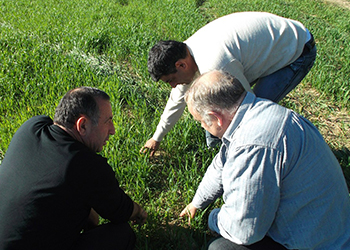 September 11: Day Five
September 11: Day Five
With the guidance of Marek Silarski from Heifer Poland we set off to the Center of Biotechnology 52 miles away. We met the director of this research institute, Yaroslav Yendrashchik, and the manager of marketing and commerce, Igor Draus. Poland has 16 regions, with one such institute for every four regions. The one we visited was founded in 1955 by the state and was privatized in May 2012. The main activity at the center is to improve upon the genetic characteristics of animals. We participated in a lecture about the techniques of genetic improvement of animals, as well as training on insemination methods.
We left the center and set off to the city of Jesephow, then on to the village of Wzduv, where we met farmer Grigoriy Vladika, who has been Heifer Poland project participant since 2002 and, after fulfilling the POG, he owns 40 Simmental cows.
 September 12: Day Six
September 12: Day Six
The last day of our visit was very busy again. We visited the small village of Novotantets, which is near Sanok. We went to milk-collecting point in the village and witnessed the process of milk collection and transportation. This milk-collecting point was founded in 1969 and is now operated by a family, every member of which has his duties.
Afterward we returned to Warsaw, had a wrap-up meeting with our Polish counterparts and returned to Yerevan full of new professional knowledge and nice impressions.
The team from Armenia would like to thank everyone who made this visit possible, who helped and guided us. We all gained precious experience from this visit and acquired nice friends.
Part of Creating Local Milk Collecting Units as Part of Elimination of Poverty in Northern Regions of Armenia project, the study tour was financed by Heifer Armenia, Heifer Poland and the Ministry of Foreign Affairs of Poland through the Polish Development Cooperation Program 2012.